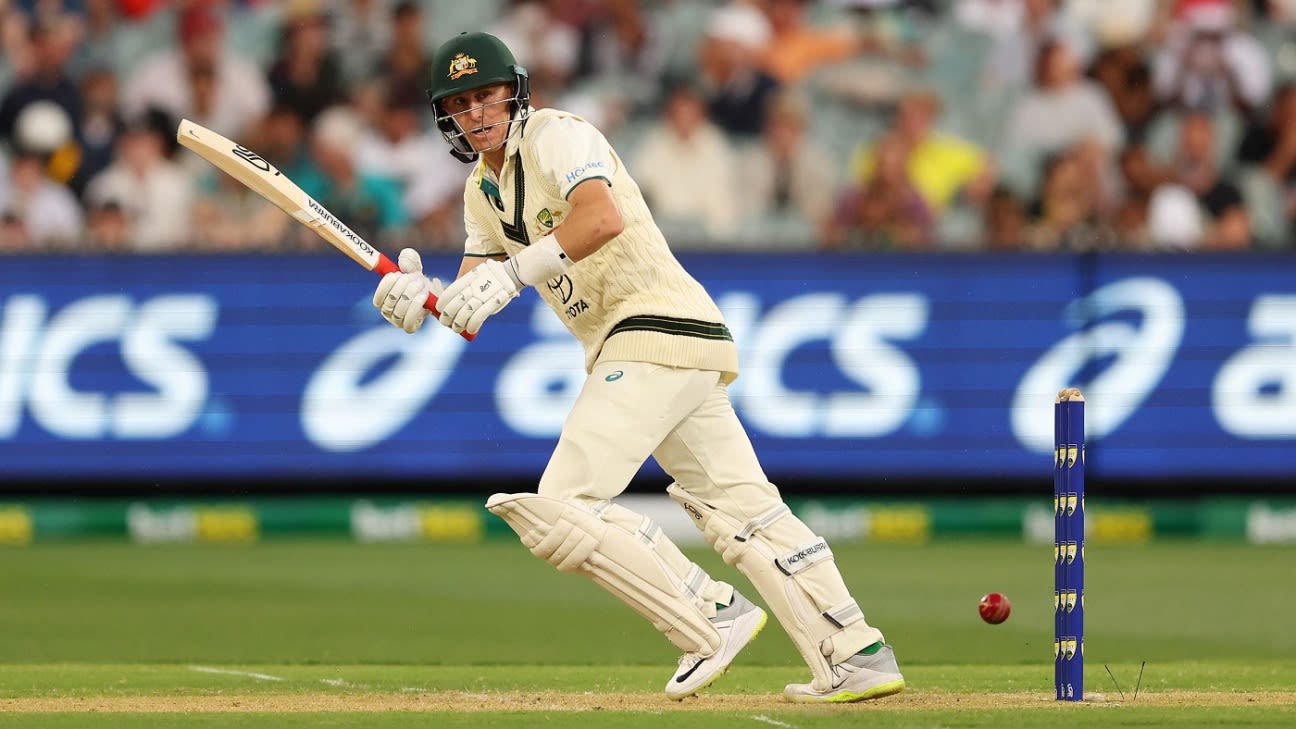If not Steven Smith, then who? Australia's opening debate
Written by I Dig Sports
Australia's exit from the T20 World Cup in the Super Eight phase did not gain much traction back home, nor has there been a fervent following of the current white-ball tour of the UK for insights on the future direction of the T20I side or hints on how the ODI World Cup-winning side will look without the retired David Warner ahead of the Champions Trophy next year. There is a still eight ODIs and three T20Is before Australia play Test cricket again.
His comments on the opening position since have been noteworthy. Back in January, he spoke about a desire to open to give himself a fresh challenge late in his career and suggested that he was in for the long haul. Since then, he hasn't explicitly backtracked, but he did publicly note Khawaja and Marnus Labuschagne's comments about their preference for him to return to No. 4. Khawaja was particularly pointed this week in doing Smith's bidding.
"He'll just probably never say it, so I'll say it for him," Khawaja told Fox Sports. "Opening is a very important spot I still think we have the best Test player of my era in the side, in Steve Smith, and his best spot has been No. 4. I feel like the best balance for our team is Labuschagne three, Smith four."
It puts Australia's selectors in a bind. Coach Andrew McDonald said on SEN last week that no decision had been made and discussions were ongoing, although he reinforced that, barring injury, the incumbent top six from the New Zealand series would remain as the top six for the first Test against India. There will likely be an indication of the plans when the multi-format players are available for Shield cricket next month.
So, if it's not Smith who opens alongside Khawaja, which it still could be, then who is it?
Who should open for Australia against India?
122 votesSteven Smith
Marnus Labuschagne
Cameron Green
Travis Head
Mitchell Marsh
Smith has eight Test centuries batting at No. 3 and averages 67.07 in that spot, higher than his 61.50 at No. 4, but he has not batted there since 2017. Part of Smith's desire to open was driven by the fact he had become frustrated by waiting too long to bat at No. 4 and first drop could be a comfortable halfway house for him. It would also mean that Green, Head and Marsh stay in their preferred spots at Nos. 4, 5 and 6.
But moving Labuschagne up from No. 3, where he has 11 Test centuries and averages 51.78, to open only to get Smith back to No. 3 might not appease the masses let alone Smith, Labuschagne and Khawaja.
There was a brief period prior to Warner's retirement when there was a very real possibility that Green could open the batting. Green was preparing for it, spending time with batting coach Michael Di Venuto facing the new ball during Warner's final Test in Sydney when the allrounder was running the drinks. The selectors were seriously weighing up the option in their desire to pick their best six batters and add a sixth bowling option. Green was only spared the monumental task when Smith put his hand up.
Asking Green to add the opening role to his heavy portfolio would limit his bowling availability. Green is also on record stating that No. 4 is his preferred position, having dominated in that role for Western Australia, saying he feels a lot more comfortable there than he does at No. 6.
Head's mediocre record starting against spin in the subcontinent was also a factor. He was shifted back to No. 5 the moment Australia left India and immediately pounded 163 in the World Test Championship final against the same opposition. Head could well open the batting in Sri Lanka later in the summer, but the selectors clearly prefer his counterattacking brilliance at No. 5 in home conditions.
Head was asked last summer about potentially opening ahead of Warner's farewell and said his preference was to remain at No. 5 in Australian conditions, although it is unknown whether his stance has shifted.
The case against both Green and Head also applies to Marsh. The West Australian has also made it very clear he would not be comfortable moving to the top of the order after taking so long to find his happy place at No. 6. He was Australia's most consistent Test batter last summer and rescued the side time and again with bold counterattacking innings coming in at four-down.
He has also been explicit in saying that his technique is not suited to batting any higher in the order, let alone against the opposition's best fast bowlers with a brand-new ball in seaming and bouncing conditions. Marsh's record in Shield cricket is testament to that where he remarkably averages just 29.98 for WA across 95 innings and has never batted higher than No. 5.
Like Green his bowling will be important across the summer, but his body is more fragile than Green's and will need even more management and rest. It is for that reason he could potentially not bowl a ball on Australia's 11-game white-ball tour of the UK.
Like Head, Marsh's form against the new ball in white-ball cricket has led to calls to use him at the top of order in Test cricket to accommodate Smith moving back down. Marsh would do anything for the team and would give it his best shot if he was asked to do it, but it is unlikely the selectors would put him in that position given they are getting career-best form out of him.
Alex Malcolm is an associate editor at ESPNcricinfo















 Phone: (800) 737. 6040
Phone: (800) 737. 6040 Fax: (800) 825 5558
Fax: (800) 825 5558 Website:
Website:  Email:
Email: 






